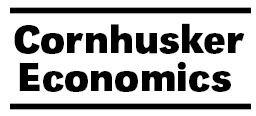Agricultural Economics, Department of

Cornhusker Economics
Date of this Version
August 2007
Document Type
Newsletter Issue
Citation
Cornhusker Economics
Abstract
In the last several years, cattle feeders and swine finishers have experienced increased volatility in both their output selling price and their major commodity input costs. For cattle feeders, these main risks include changes in fed cattle, feeder cattle and corn prices. Figure 1 on the next page shows that the spreads between these three key markets have had significant changes during the last several years. The same also holds true for swine as lean hog, corn and soybean meal markets have been more variable in recent years, and the spread between these prices continuously changes. Because these spreads influence cattle feeding and swine finishing profits, hedging or insuring these feeding spreads can be an effective risk management strategy. In 2006, the United States Department of Agriculture Risk Management Agency offered Livestock Gross Margin (LGM) for Cattle Insurance to protect this spread for cattle feeders. It then expanded the LGM for Swine program from Iowa to twenty states starting in July 2007.


Comments
Published in Cornhusker Economics, 08/15/2007. Produced by the Cooperative Extension, Institute of Agriculture and Natural Resources, Department of Agricultural Economics, University of Nebraska–Lincoln.
http://www.agecon.unl.edu/Cornhuskereconomics.html